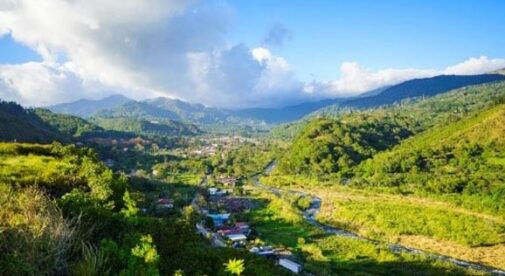“While living in Colorado,” Beth Cushman says, “I had to work multiple jobs in order to survive and save money for my retirement. Now, in Panama, I am able to do my main accounting job remotely, while still having time to enjoy my new life. My monthly budget is about $800, including food, transportation within Panama, entertainment, yard maintenance, and insurances.”
Beth considers herself very lucky. For several years her dream was to retire to Panama. Finally, frustrated by life in the United States, and inspired by the post-COVID normalization of remote working, she decided to take the bull by the horns and relocate.
“My current location gives me affordable land to enjoy in my own way, a calm environment, a healthy lifestyle, and a community where neighbors help each other and watch out for each other. It allows me to travel and still save money for retirement. In addition, I appreciate the lower crime rate as well as the honorable morals of the Panamanian people.”
[question_evergreen]
Not wanting to reside in an expat community, Beth chose to purchase a home in Chiriqui province in a small Panamanian village. “The home I found is exactly what I wanted. Big enough for me, but not too big to maintain. I have plenty of land to plant more fruit trees and a small garden.”
Having close friends living in Bocas del Toro on Panama’s Caribbean coast was one of Beth’s biggest incentives, but cost of living was a huge factor too. She has found that the cost of living varies, according to lifestyle and location. “I chose to live in a Panamanian community not only for the culture, but also for the affordability. The cost of my home was less, and I am able to purchase food such as fresh produce, eggs, and fish for considerably less than in an expat community.”
Day-to-day living in Panama is lower than in the U.S., and the currency used in the country is the U.S. dollar, so it’s easy to compare costs. However, it’s in the long term that the savings are most notable, particularly on annual costs like property taxes and healthcare.
Check out our Panama Cost of Living Page with Monthly Budget Breakdown here.
Being employed remotely from the U.S., Beth uses her employer-sponsored healthcare for emergencies or surgeries. For lab work and small doctor appointments she uses the local medical clinic, lab, and pharmacy.
“My lab work has cost me on average $10 per visit and doctor visits an average of $60,” she says. “This was to be seen by an English-speaking doctor. It would cost less to visit a local clinic in my neighborhood if I were fluent in Spanish.”
Beth paid $120,000 for her three-bedroom (she uses one room as her office), two-bathroom house on three-quarters of an acre of beautifully landscaped land. The gardens feature various fruit trees, as well as a multitude of flowers and shrubs. Her large, covered terrace is her great delight. “Here, I can sit and watch the birds, iguanas, and squirrels.”
Given that she is still working at her accounting job, Beth’s life isn’t quite the same as if she were retired in Panama. Most of the day, she’s in her office, but a useful aspect of working remotely in Panama is that it shares its time-zone with the U.S. east coast. That simplifies co-ordination between head office and home office. And when your workplace is just down the hall, there’s no commute to drain your post-work free-time. Even so, Beth appreciates her weekends just the same as any office-worker.
“Saturday is my day to relax and enjoy doing nothing but sitting on the terrace enjoying nature,” she says. “I work weekdays and use Sunday to run my errands when needed. Saturday is coffee and nature in the morning, usually followed by a siesta in the late morning to mid-afternoon. In the late afternoon to early evening, it’s back to the terrace to enjoy nature, most often with an adult drink or two.”
Beth is reveling in her new-found tropical freedom. It’s not a slowing-down sort of relocation. As a working woman, she’s busy, but she also packs plenty into her free time. To get a better grasp of Panama and its people, she is taking regular Spanish classes, has fostered two dogs through the local animal rescue center in Boquete, and spends a lot of time traveling to various locations in Panama in order to enjoy the diverse beauty and cultural differences in her new country.
The knowledge and experience accumulate, and Beth has observed enough of expat and local life in Panama to be able to make suggestions for anyone considering a move to the country. Her primary advice is to truly get to know Panama (or any other country) before getting serious about moving there.
“Make sure you visit the location where you are considering living,” she says. “To accurately encounter weather, daily issues, pros and cons, you should spend from one to three months there. Join chat groups that relate to your desired communities in order to get an idea of issues, activities, etc. And don’t forget that you’re a newcomer. Respect the culture, laws, and people of the country to which you are moving.”
[panama_signup]
Related Articles
An Overview of Traditions and Culture in Panama
Panama Itinerary: How to Spend 7 Days in Panama
[post_takeover]
[lytics_best_articles_collection]

